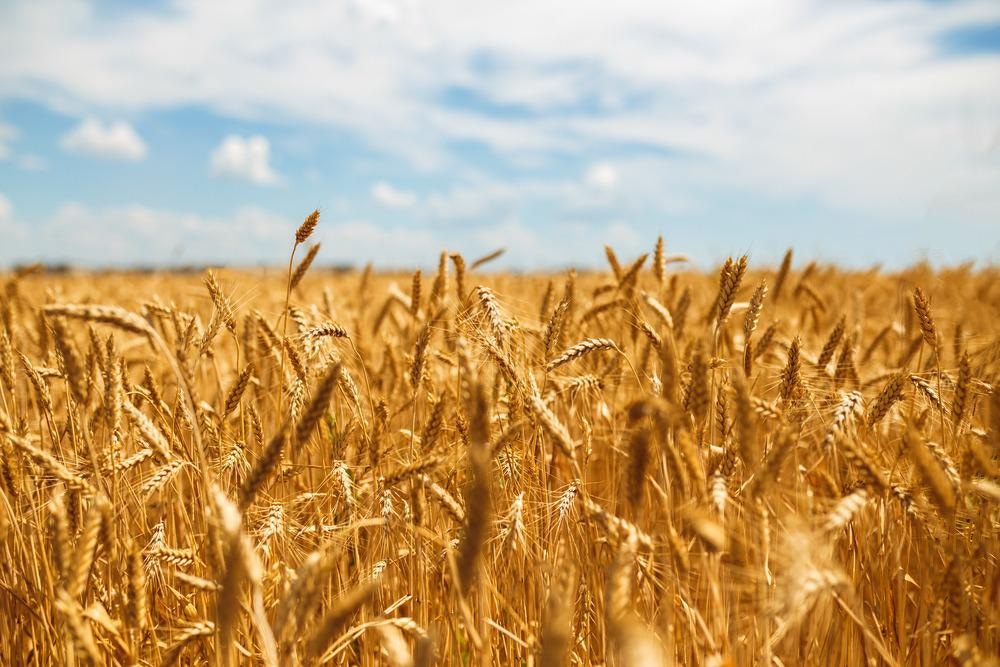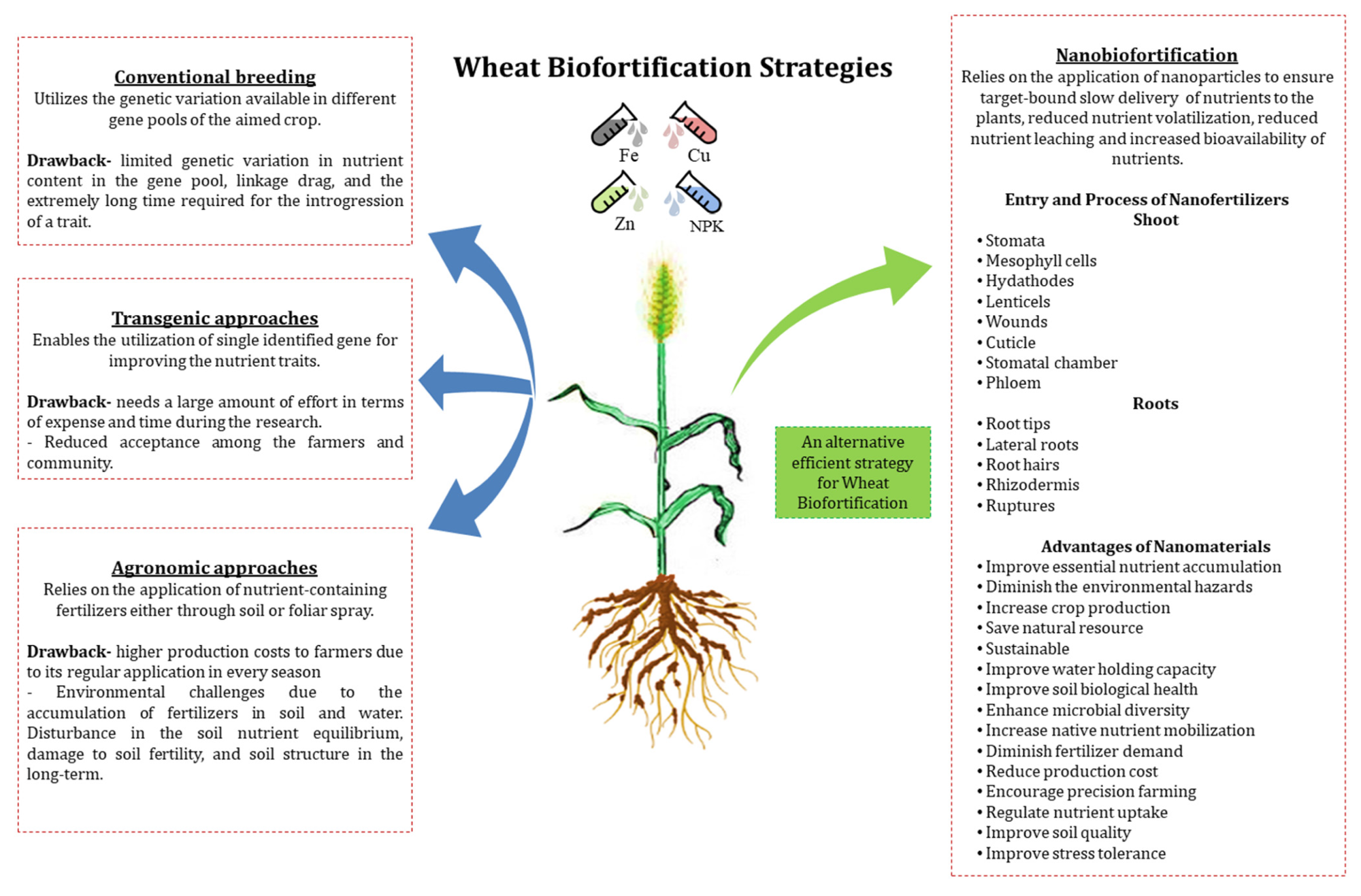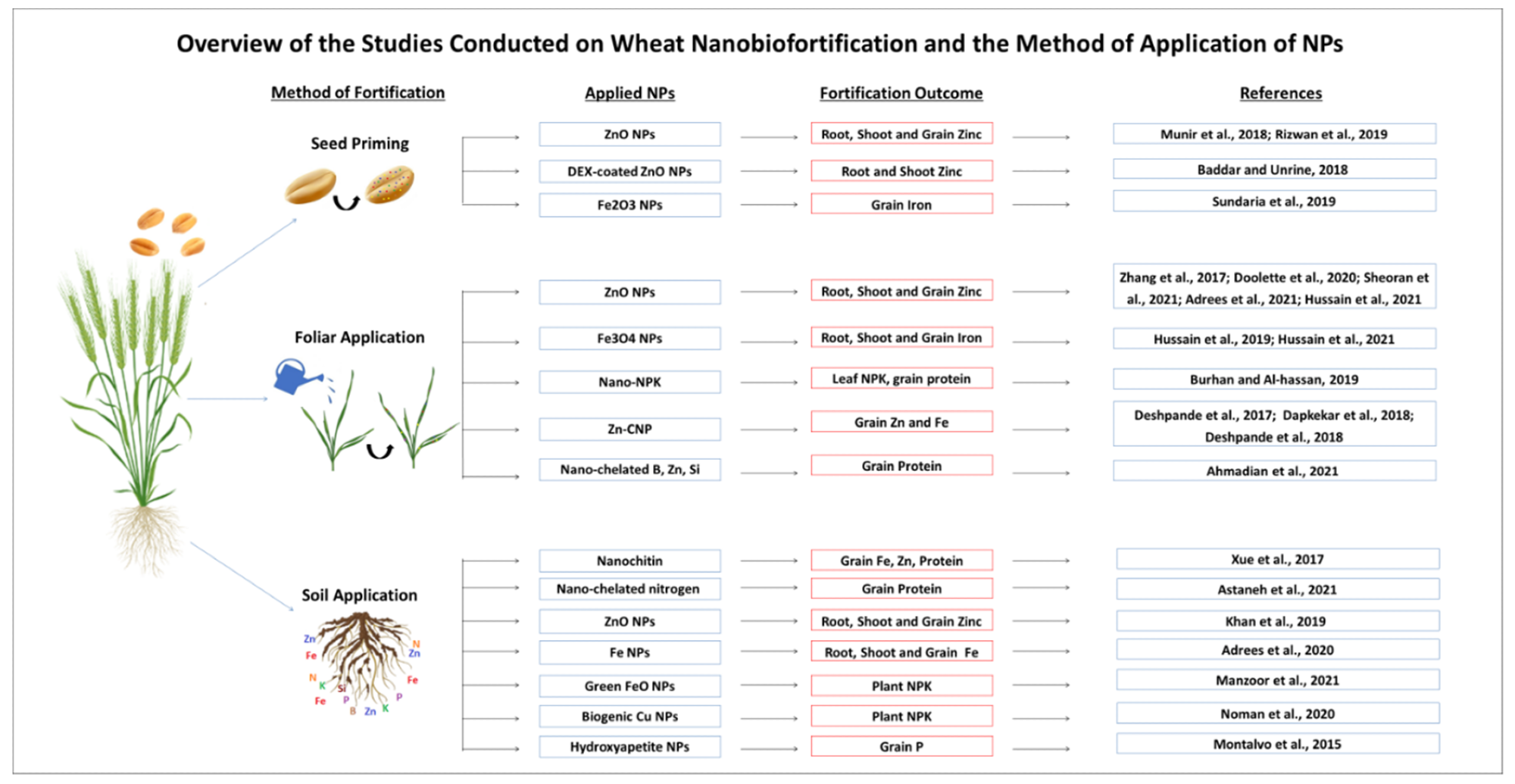The growing world population needs a secure supply of food. Biofortifying staple foods is one way to solve challenges in the food industry. A paper recently published in Biology has considered the use of nanotechnology to fortify wheat, a key global crop.

Study: Insight into the Prospects for Nanotechnology in Wheat Biofortification Image Credit: maxbelchenko/Shutterstock.com
What is Biofortification?
Biofortification is the process of deliberately increasing the nutritional value of a food by agronomic methods, breeding, and biotechnology. It differs from conventional fortification in that it aims to increase the nutritional value of a plant during its growth rather than manually adding vitamins, minerals, and trace elements during processing.
Biofortification has important implications for reaching populations that have no or limited access to traditional supplements and fortification methods. It provides public health benefits with minimal risk to the health of populations and individuals.
Different strategies used for wheat biofortification. The left side of the figure explains the wheat biofortification strategies other than nanobiofortification and their drawbacks. The right side of the figure provides a summary of nanobiofortification including its target, entry points of nanofertilizers in plants, and the advantages of nanomaterials (Fe—iron, Zn—zinc, Cu—Copper, NPK—nitrogen, phosphorus and potassium).
Biofortifying Wheat: Current Perspectives
Wheat is consumed by a sizable proportion of the world’s population. Increasing its nutritional value will tackle issues with malnutrition in growing populations. In recent decades, several biofortification strategies have been attempted with varying degrees of success. Conventional breeding, agronomic biofortification, and transgenic approaches have all been employed to provide nutritional benefits.
Whilst these approaches have had their successes, there have also been major drawbacks to them. There are regulatory barriers to the field, even though the biofortification methods themselves are well-developed. Genetic biofortification is limited by restrictions in the available targeted biological gene pool as well as being time-consuming. Agronomic biofortification suffers from problems with available fertilizers. Conventional plant breeding takes time.
Nanobiofortification
Nanobiofortification has gained traction in recent years as a viable alternative to contemporary genetic and agronomic methods. Using nanotechnology can circumvent time issues, resource requirements, and environmental risks.
One main benefit is the targeted delivery of fertilizer in the required amount, increasing nutrient uptake and preventing the leaching of potentially harmful inorganic fertilizer into fragile ecosystems. Nanomaterials used for this purpose vary in efficiency due to size, composition, chemical features, and the plant they are targeted for.

An overview of the different methods used for Wheat Nanobiofortification, types of applied nanomaterials, and their outcome in the form of fortified nutrients. (Abbreviations in the figure: NPs- nanoparticles; ZnO—zinc oxide; dex—dextran; Fe2O3—ferric oxide; Fe3O4—ferrosoferric oxide; NPK—nitrogen, phosphorus, potassium; CNP—chitosan nanoparticles; B—boron, Fe—iron, Zn—zinc; Si—silicon; P—phosphorus; Cu—copper).
Nanotechnology is utilized in biofortification in numerous ways. Nanobiofortification systems can introduce nutrients into soil in a controlled release rate. Their ability to provide wide coverage and efficient absorption support plant development and environmental safety, compared to agronomic fertilizers.
Currently, three different types of nanomaterials are being employed for biofortification: nanoscale coating fertilizers, nanoscale additives fertilizers, and nanoscale fertilizers (NFs.) Nanomaterials used in these fertilizers can be classified as polymeric nanomaterials, ceramic nanomaterials, and metallic nanomaterials.
The nanomaterials used in nanofertilizers can be grouped into macronutrient fertilizers, micronutrient fertilizers, plant growth-stimulating NFs, and nanomaterial-enhanced fertilizers. This grouping is due to the nutritional benefits the nanoscale systems confer upon the target plant. The research provided many perspectives on nanobiofortification methods, some of which will now be discussed.
Nanobiofortification of Wheat with Micronutrients.
Several micronutrients are essential for wheat, including zinc, the deficiency of which causes necrosis, stunted growth, decreased seed quality, and decreased yield. Traditionally micronutrient enhanced composite NPK fertilizers do not always provide wheat with the necessary concentration of micronutrients.
The small size and large surface area of nanoparticles significantly increase the bioavailability of the micronutrients. Zn and Fe enhanced NFs are of particular focus due to the deficiency of these micronutrients in the world population.
Macronutrient NF Biofortification
Important macronutrients including calcium, magnesium, and nitrogen are encapsulated or inserted into macronutrient NFs. The addition of these macronutrients to NPK fertilizers in the amounts necessary increases the amount of fertilizer needed, which presents a serious ecological risk. Nanotechnology-based delivery systems are more efficient at delivering macronutrients as well as being more sustainable.
Seed Priming, Soil Fertilization, and Foliar Fertilization
There are different routes by which nutritionally enriched nanomaterials can be introduced into wheat plants. Seed priming, soil fertilization, and foliar fertilization can all be employed. Studies have been conducted into all three routes, demonstrating the benefits of NPs.
In seed priming, seeds are treated before planting. Seed priming with nanoparticles improves metabolism and delivers nutrients more effectively than conventional methods. Both soil and foliar fertilization show increased nutrient uptake and yield using NPs.
Final Perspectives
Biofortification with nanoparticles shows huge promise for the future. Optimized delivery can save costs and allow so-called “Precision farming.” Whilst NFs have well-discussed health benefits, controlling their supply and accumulation needs to be carefully monitored, as their long-term health and environmental risks are not properly understood.
Although there are some reports of toxicity in nanomaterials used for agricultural purposes, they remain one of the best solutions to the challenges facing modern agriculture and feeding a growing world population.
Further Reading
Kahn, M.K et al. (2021) Insight into the Prospects for Nanotechnology in Wheat Biofortification [online] Biology 10(11) 1123 | mdpi.com. Available at: https://www.mdpi.com/2079-7737/10/11/1123/htm
Disclaimer: The views expressed here are those of the author expressed in their private capacity and do not necessarily represent the views of AZoM.com Limited T/A AZoNetwork the owner and operator of this website. This disclaimer forms part of the Terms and conditions of use of this website.